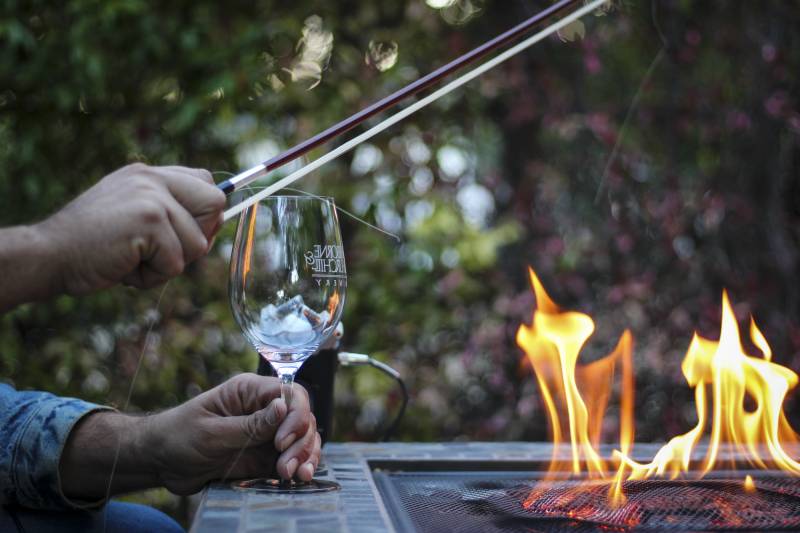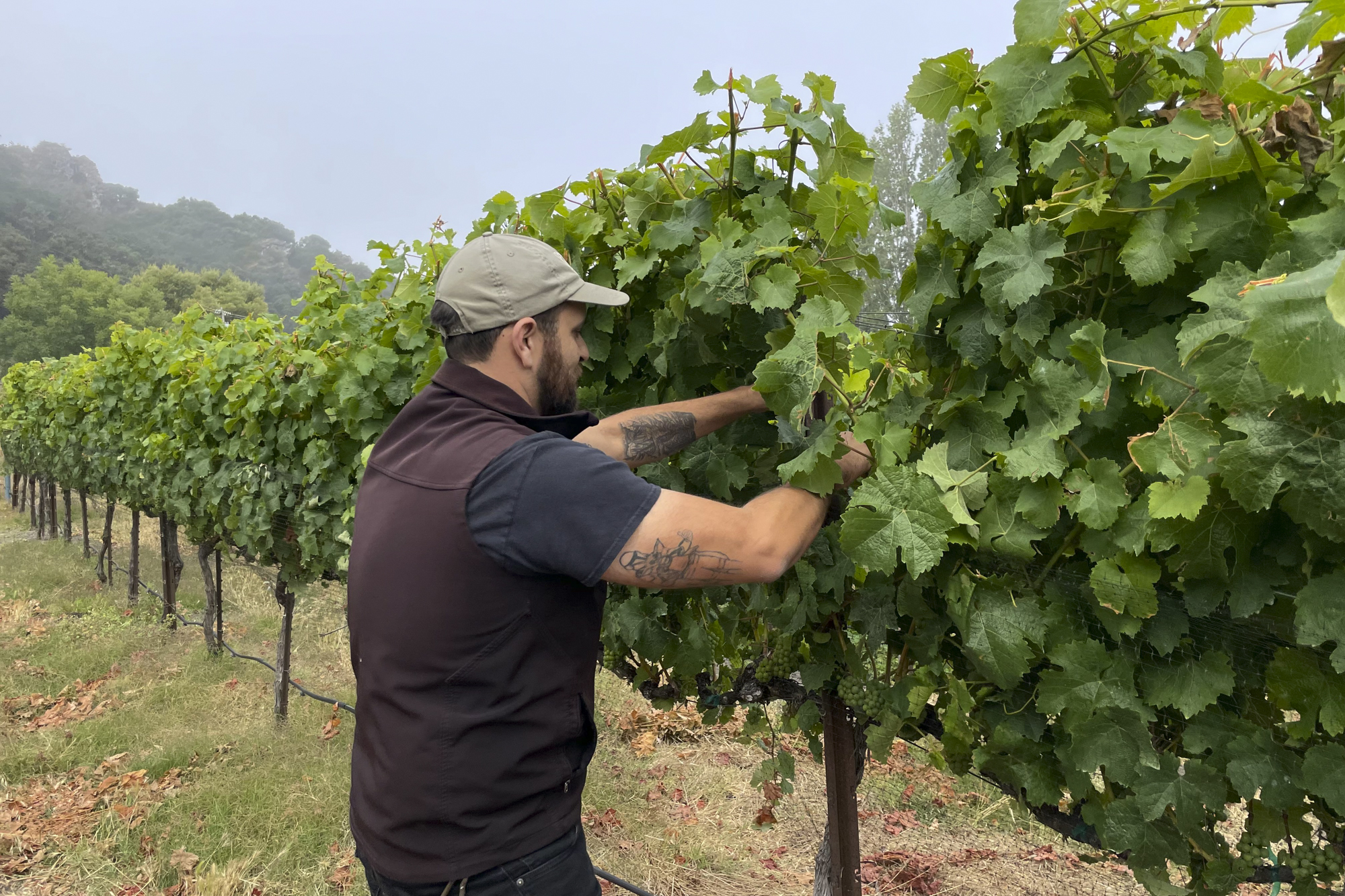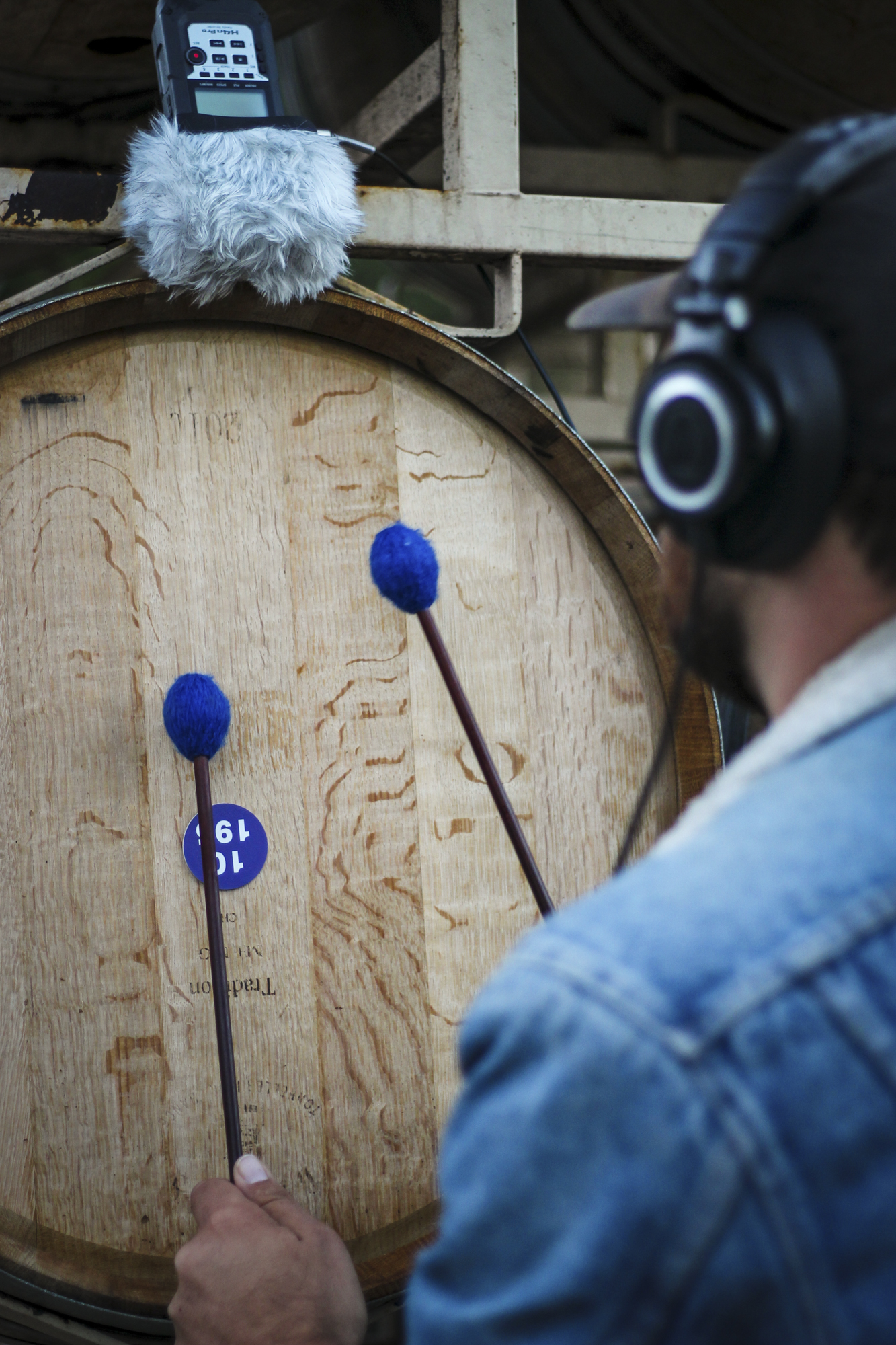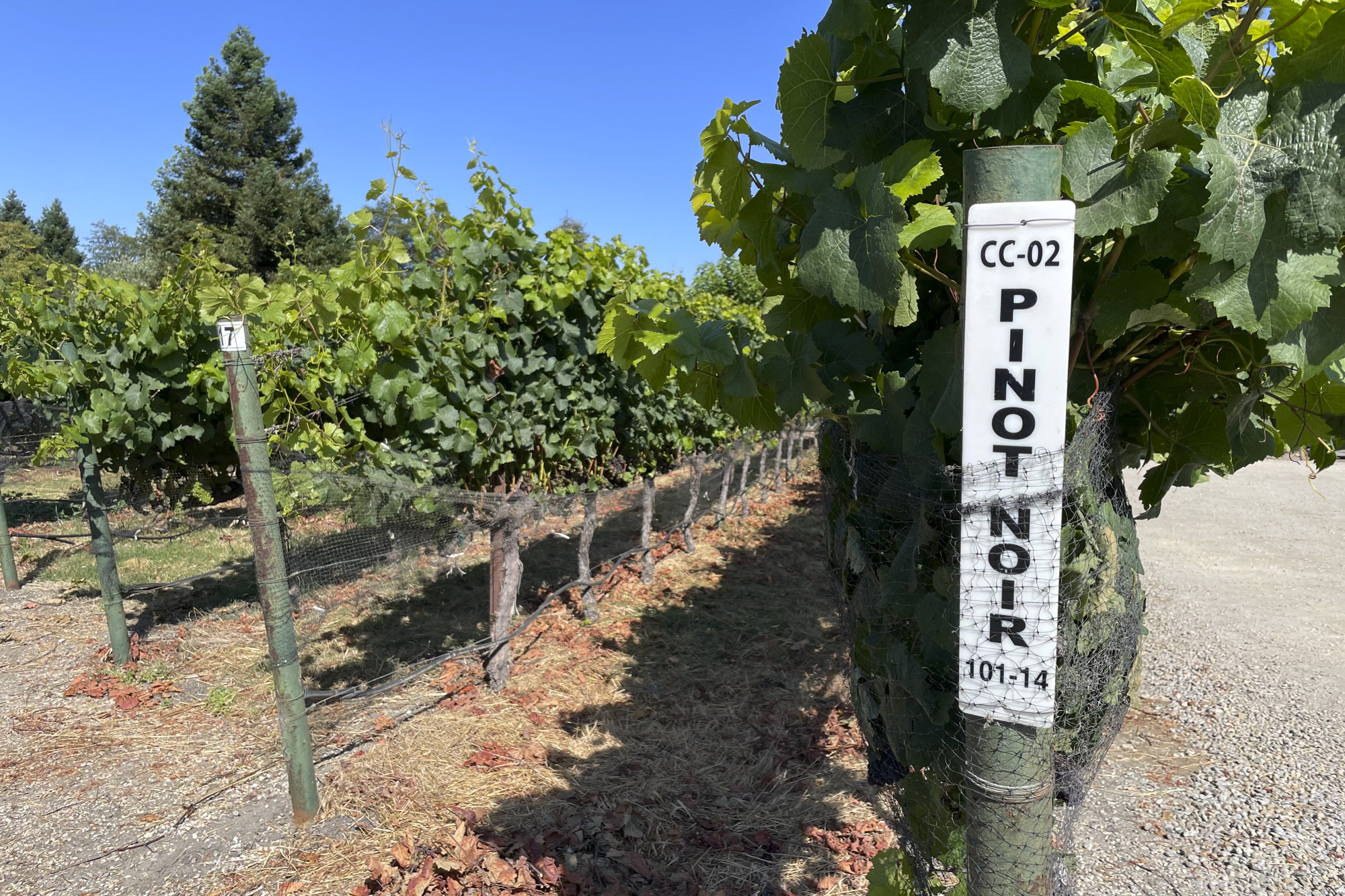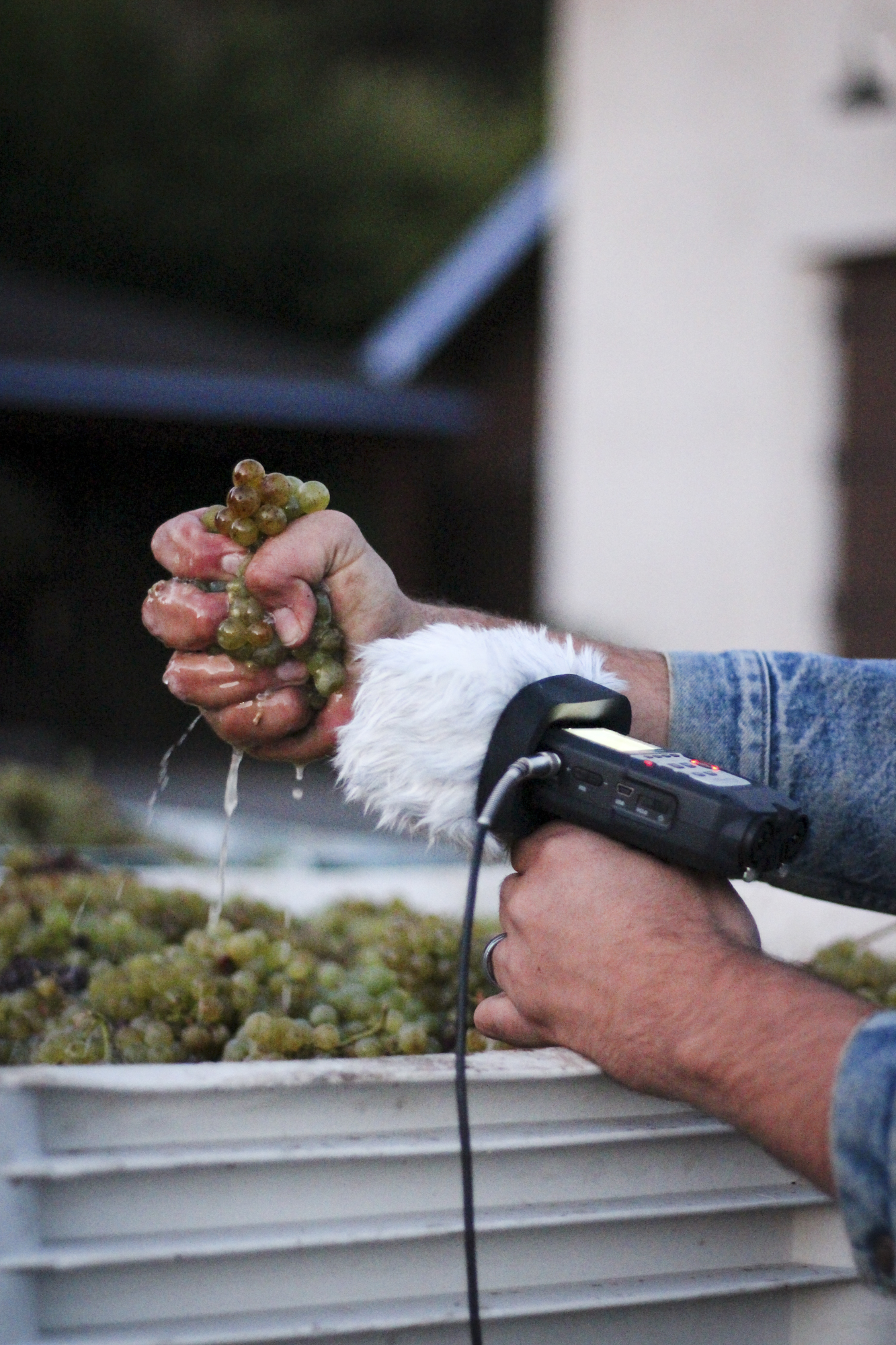On a recent foggy morning, composer and winemaker Brook Munro stood perfectly still next to a row of grapevines, listening to a chorus of birds and insects. He likes to tune into the sounds of the vineyard early, well before any visitors show up to the tasting room at the Claiborne and Churchill Winery in San Luis Obispo’s Edna Valley.
Munro is keenly aware of the sounds of the winemaking process — as both a lifelong musician and a professional winemaker. He spent years figuring out how to combine these two passions with his debut album “Harvest in Twelve Parts,” which draws on sounds he recorded from the wine harvest.
“One of my favorite things to do is to record unique sounds or ordinary sounds and manipulate them — bend them to my will, so to speak,” said Munro, who’s toured with a rock band called “The Mighty Fine” and scored several indie films. “I’ve recorded everything from kitchen sinks to toothbrushes to the sound of cars.”
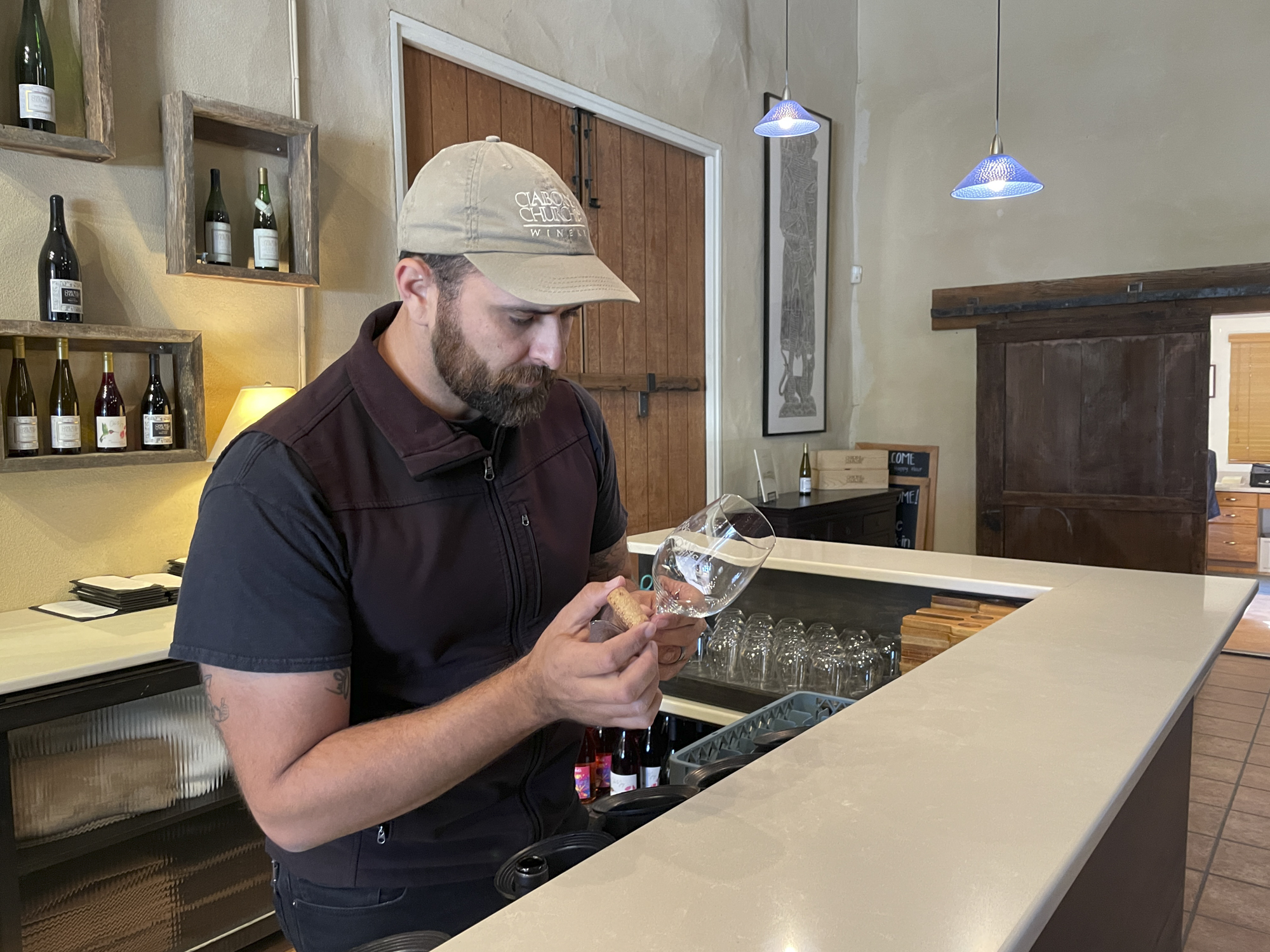
In 2021, Munro — who’s worked as a manager at Claiborne and Churchill for 15 years — had an idea: to record the sounds of the vineyard during harvest season, one of the busiest and most vibrant parts of the winemaking process.
